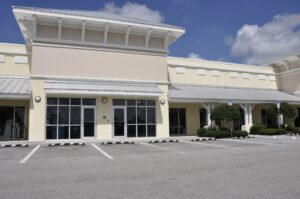Asphalt pavements develop cracks due to heavy traffic, extreme weather conditions, and poor maintenance. If you don’t fix them, they can damage car tires, cause accidents and affect curb appeal. When repairing asphalt cracks, you may need to evaluate crack fill vs crack seal.
Each of these methods is ideal for different conditions and levels of damage. Learning the differences will help you select a cost-effective and suitable choice. Here is more information on asphalt crack filling vs crack sealing.
Crack Filling vs Crack Sealing: Material Used
One significant difference between asphalt crack filling vs crack sealing is the material used. Crack filling materials should be less flexible to maintain the bond between the affected areas of asphalt. Often, experts use different non-rubberized substances like asphalt emulsions. They also apply liquid asphalt, which is highly viscous and a great binder.
Crack sealants should prevent water penetration. They must also be flexible to contact and expand according to the weather. The most common sealant used for asphalt crack filling and sealing is rubberized asphalt. You can also apply self-leveling silicone or low-modulus rubberized asphalt.
Crack Filling vs Crack Sealing: Suitability for Different Damages
If you are debating crack filling vs crack sealing, understand that they are ideal for different forms of damage. A filler is suitable for non-working cracks located in areas of your asphalt pavement with limited movement.
A sealer is suitable for fixing cracks between 0.5-2 inches wide. Once you notice damage, apply it to prevent the crevices from widening or deepening.
Crack Filling vs Crack Sealing: Durability
When torn between asphalt crack filling vs asphalt crack sealing for your project, consider the durability. A filler is a longer-lasting solution for cracks you can’t bond with a seal. Using sealants on such damage will only prevent water penetration but won’t improve the pavement’s strength.
A crack seal can enhance the lifespan of your pavement when used correctly. Always measure the size of the cracks and determine the cause of the damage before the repairs.
Cost of Crack Filling vs Crack Sealing
When debating between crack filling and crack sealing, choosing to go with crack filling is tempting to fill the void, but it isn’t really the best option to elongate the life of your parking lot asphalt. While crack sealing may cost more, the overall cost is less than removing and replacing. Still, each method will only give value to the investment when used appropriately.
Crack filling will lower the overall cost of maintaining your asphalt driveway. But you may need to conduct other treatments in the future to control cracking. A crack seal provides a lasting solution for small crevices, lowering long-term expenses. It prevents secondary issues like erosion and moss, and mildew growth.
Choosing Between Crack Filling and Crack Sealing
Crack sealing or crack filling will only produce the needed results when you use the proper material and equipment. Before repairing your driveway, contact an expert to inspect it. They will identify the cause and extent of the damage to recommend crack filling vs crack sealing. A skilled paver also uses the right equipment during repair to protect the rest of the surface.
Get Expert Asphalt Pavement Services in North & South Carolina
Georgia Wildcat Paving has a skilled team for all your asphalt pavement needs. We will help you choose between crack fill vs crack seal based on your project’s needs. Fill out our form for a detailed quote. Not sure what asphalt or concrete services your business needs? Schedule a Lunch & Learn and get lunch on us while we help you navigate what’s best for your property.






